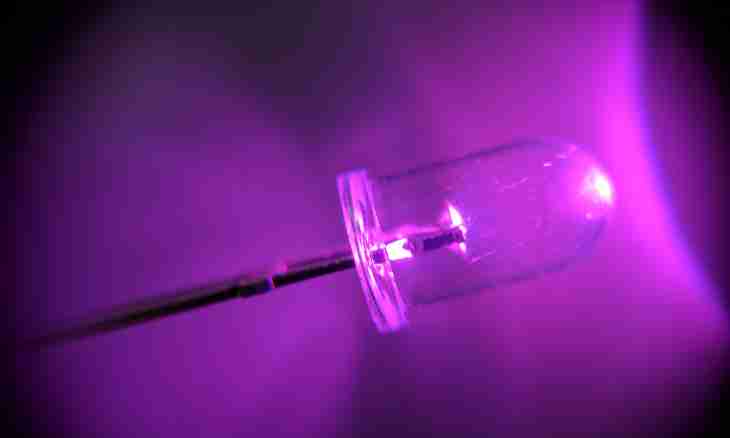The last achievements in the field of light-emitting diodes brought a huge variety the range of these radio components. Red, green, blue, blinking, big and small. However each type of a light-emitting diode has the parameters which significantly differ from other type. For example, current of red light-emitting diodes is in most cases equal 20ma, and current of green is ranging from 5 to 20ma. In certain cases it is necessary to learn light-emitting diode current, without knowing its characteristics.
It is required to you
- the laboratory power supply on 12 V, constant resistors: 2.2 kOhm; 1 kOhm; 560 Ohms, the powerful variable resistor on the 470-680th, the milliamperemeter, the digital voltmeter, pieces of a multicore assembly wire.
Instruction
1. At first it is necessary to learn polarity of a light-emitting diode. For this purpose attach 2 pieces of an assembly wire to both electrodes. For the purpose of operation simplification, electrodes can be cut off nippers at an acute angle and to put on them pieces of an assembly wire. This way is good the fact that the light-emitting diode will not be required to perepaivat every time, he besides is afraid of overheating, and isolation will press electrodes to the carrying-out wire veins that is very convenient. Then, the same way connect the constant resistor to one of wires 2.2 kOhm and connect in any polarity to the power supply. If the light-emitting diode did not light up, change polarity. If lit up, immediately disconnect, mark the wire connected to power supply plus as "+".
2. Now collect rather difficult electrical circuit: 2.2 kOhm replace the constant resistor on the 560th for red light-emitting diodes, consistently connect the variable resistor and the milliamperemeter to this chain. Parallel to a light-emitting diode, connect the voltmeter, with the resolution of 0.1B. Install the variable resistor on the maximum resistance.
3. Connect this chain to the power supply according to the revealed polarity. The light-emitting diode will gleam.
4. Write down indications of devices.
5. Gradually reduce resistance of the variable resistor and watch indications of the voltmeter. At first, tension will increase in limits 0.3-0.5B, in rather linear dependence on an angle of rotation of the variable resistor. Current will increase, brightness of a luminescence of a light-emitting diode will increase too. Write down indications of devices through everyone 0.1B the increasing tension.
6. At the moment when tension increases to a lesser extent, than current, follows stop reduction of resistance of the resistor. At this moment will reach optimum current of a light-emitting diode when further increase in current is not followed by increase in brightness of a luminescence, and will cause only reduction of term of its service.

